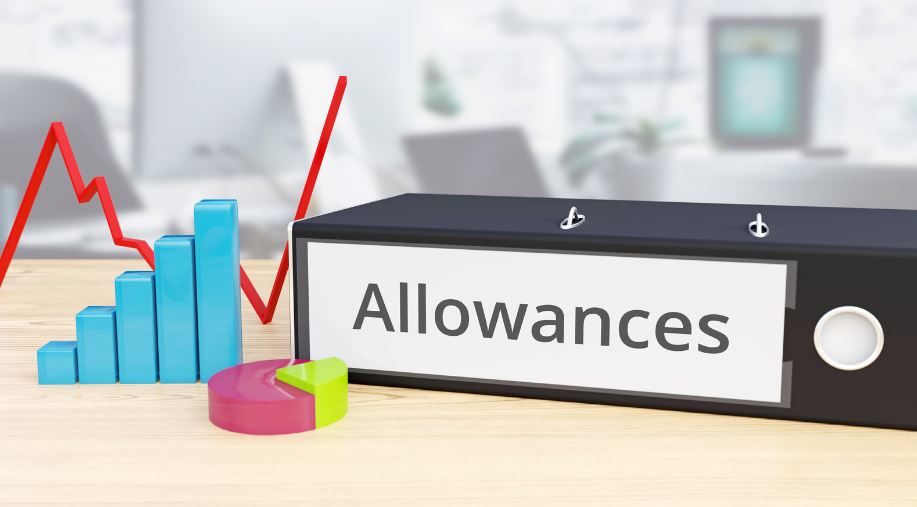Are you curious to know what is DA allowance? Dearness Allowance (DA) is an additional component of salary provided to employees to offset the impact of inflation on their cost of living. It is a form of compensation that helps employees maintain their purchasing power in the face of rising prices.
DA is applicable to both government and private sector employees in India. It is calculated as a percentage of the employee’s basic salary and is revised periodically based on changes in the Consumer Price Index (CPI).
The purpose of DA is to ensure that employees can cope with the increasing costs of essential goods and services and maintain a decent standard of living.
Understanding DA Allowance and Its Origin
DA Allowance, also known as Dearness Allowance, has a rich history that dates back to the post-World War II era. It was introduced as a measure to address wage revisions and combat the economic impact of inflation. Initially referred to as Dear Food Allowance, it aimed to provide employees with additional compensation to cope with rising food prices.

Over time, this allowance became closely linked to the Consumer Price Index (CPI), which serves as an indicator of changes in the cost of living. The calculation of DA Allowance follows specific formulas that take into account the average All-India Consumer Price Index (CPI) for a given period.
The rules governing DA Allowance may vary between government and private sector employees. Government employees typically receive a fixed percentage of their basic salary as DA Allowance, which is revised periodically to reflect changes in inflation rates. Private sector companies may have their own rules and guidelines for the calculation and disbursement of DA Allowance.
It is important for both employers and employees to stay updated with the prevailing DA rules to ensure accurate calculations and appropriate compensation. Adhering to these rules not only ensures fair remuneration but also helps in maintaining transparency and trust between employers and employees.
What is DA Allowance?
DA Allowance, also known as Dearness Allowance, is a component of an employee’s salary that is provided to cover the increasing cost of living due to inflation. It is usually calculated as a percentage of the employee’s basic salary and may vary depending on factors such as location and cost of living index.
DA Allowance helps employees maintain their purchasing power and cope with rising prices for essential goods and services. By adjusting their salary to keep up with inflation, organizations ensure that their employees can meet their daily needs without facing financial difficulties.
The calculation of DA Allowance often involves using specific formulas that take into account factors such as the All-India Consumer Price Index (CPI). These formulas vary across organizations and sectors but are designed to reflect the changing economic conditions and provide an accurate representation of the cost of living adjustments.

Understanding the concept of DA Allowance is essential for both employees and employers. It enables employees to have a clear understanding of how their salary is structured and helps them plan their finances effectively. Employers, on the other hand, need to ensure they are following the appropriate guidelines and calculations to implement DA Allowance accurately.
DA Allowance for Government Employees
DA Allowance is particularly important for government employees in India. It is an integral part of their salary structure and is designed to help them cope with inflation. The government regularly revises the DA Allowance for its employees to ensure that they are adequately compensated for changes in the cost of living. This revision is typically done based on the recommendations of the Pay Commission, which takes into account various factors such as the All-India Consumer Price Index (CPI) and inflation rates.
The latest news on DA Allowance hikes is closely followed by government employees as it directly affects their take-home pay and financial well-being. Government employees eagerly anticipate updates on the latest DA hike announcements. Changes in the DA Allowance can significantly impact their monthly earnings and provide much-needed financial relief. It is essential for government employees to stay informed about the latest news related to DA allowance for government employees to understand how it could contribute to their economic stability.

How to Calculate DA Allowance?
The calculation of DA Allowance involves using specific formulas that take into account various factors such as the All-India Consumer Price Index (CPI). The formula for calculating DA Allowance may differ for different categories of employees, such as government employees and public sector employees.

To calculate DA Allowance for government employees, the following formula is commonly used:
- Subtract a base value from the average CPI for a specific period.
- Divide the result by the base value.
- Multiply the quotient by 100 to get the percentage.
The exact formula may vary based on the specific rules and regulations set by the government or the employing organization. It is essential to refer to the official guidelines or consult with the relevant authorities for accurate DA allowance calculation.
For public sector employees, the formula for calculating DA allowance may vary depending on the sector and organization. It is advisable to consult the pay scale and DA policies specific to the particular sector.
Keep in mind that the da calculation formula could be revised over time due to changes in economic conditions or government policies. Staying updated with the latest guidelines will help ensure accurate calculations and avoid discrepancies.
Exploring Different Types of Dearness Allowance
Dearness Allowance (DA) can be categorized into various types based on the specific rules and regulations that govern its calculation and application. One common categorization includes Industrial Dearness Allowance (IDA) and Variable Dearness Allowance (VDA).
IDA is typically applicable to employees of public sector undertakings and is revised quarterly based on changes in the Consumer Price Index (CPI). This type of DA Allowance ensures that employees in the industrial sector receive appropriate compensation for inflation.
VDA, on the other hand, is applicable to central government employees and is revised semi-annually, usually in January and July, based on the prevailing CPI. It is designed to ensure that government employees receive fair and consistent compensation in line with the cost of living.
These different types of dearness allowance are essential in maintaining parity and addressing the varying needs and conditions of employees across different sectors and industries.
Comparing DA with Other Salary Components
DA Allowance is just one component of an employee’s salary structure. It is often compared with other salary components such as House Rent Allowance (HRA), Basic Salary, and Provident Fund contributions to understand the overall compensation package.
Unlike HRA, which specifically covers housing expenses, DA Allowance is meant to offset the general increase in the cost of living due to inflation. While both HRA and DA Allowance contribute to an employee’s take-home pay, they serve different purposes and are calculated and applied differently.
House Rent Allowance (HRA) is provided to employees to assist with their housing expenses. The amount of HRA varies depending on the employee’s location and can be a significant portion of their salary. HRA is typically calculated as a percentage of the employee’s basic salary and may be tax-exempt, subject to certain conditions.
On the other hand, Dearness Allowance (DA) is calculated as a percentage of the employee’s basic salary and is intended to compensate for the increasing cost of living due to inflation. DA allowances are revised periodically based on fluctuations in the Consumer Price Index (CPI) and the prevailing economic conditions. Unlike HRA, DA is taxable.
In addition to HRA and DA, other salary components such as Basic Salary and Provident Fund contributions also play a crucial role in an employee’s overall compensation package. Basic Salary forms the foundation of an employee’s salary structure and is used as the base for calculating other salary components, including DA. Provident Fund contributions, on the other hand, help employees build a retirement corpus.
Understanding the differences and similarities between these salary components is essential for employees to make informed decisions regarding their overall compensation. It allows them to assess the impact of DA on their take-home pay and plan their finances accordingly. Additionally, comparing DA with other salary components provides a comprehensive view of an employee’s compensation and helps in evaluating the employer’s offerings in terms of remuneration.
DA Allowance Benefits for Pensioners
DA Allowance is not only applicable to active employees, but it also provides benefits to pensioners. Retired government employees, including civil and defense pensioners, also receive DA Allowance as part of their pension. The revision of pensions for retired employees is linked to the revision of DA Allowance for active employees. This ensures that pensioners are adequately compensated for changes in the cost of living.
The DA Allowance for pensioners is typically revised whenever there is an update in the DA rates for active employees. This helps pensioners maintain their purchasing power and cope with inflationary pressures.
Conclusion
DA Allowance is a crucial component that ensures employees, particularly government employees, can maintain their standard of living amidst increasing prices. It serves as a compensation element that helps offset the impact of inflation on living expenses. The calculation and implementation of DA Allowance may vary based on factors such as specific government regulations or organizational policies.
Understanding how DA Allowance is calculated, its benefits, and its relationship with other salary components is essential for employees to make informed decisions about their overall compensation package. By knowing the intricacies of DA Allowance, employees can better grasp its significance and advocate for fair remuneration.
Keep in mind that DA Allowance is just one piece of the overall compensation puzzle. It is crucial to consider other elements such as basic pay, house rent allowance, and other allowances when evaluating your financial compensation. By considering the full picture, you can negotiate and make choices that align with your long-term financial goals.
Staying up to date with the latest developments and rules surrounding DA Allowance is also essential. Be sure to consult reliable sources, such as official government notifications or credible news outlets, to stay informed about any changes or updates to the DA Allowance structure that may affect your earnings.
FAQs
Is DA Allowance only applicable to government employees?
No, DA Allowance is applicable to both government and private sector employees in India.
How does DA Allowance benefit pensioners?
DA Allowance is also provided to pensioners to ensure that they are adequately compensated for changes in the cost of living.
How does DA Allowance compare with other salary components?
DA Allowance is different from components such as House Rent Allowance (HRA) and is calculated and applied differently, although they all contribute to an employee’s take-home pay.
How often is DA Allowance revised?
DA Allowance is revised periodically based on changes in the Consumer Price Index (CPI) to ensure that employees are adequately compensated for inflation.
What is the latest news on DA Allowance hikes?
The latest news on DA Allowance hikes is closely followed by government employees as it directly affects their take-home pay and financial well-being.




